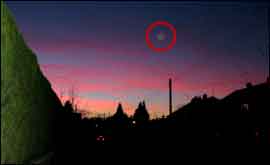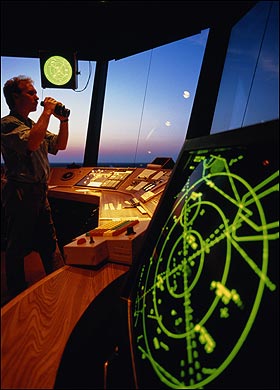Hynek, J. Allen (1910–1986)

J. Allen Hynek was an astronomy professor at Ohio State University, who went on to become Associate Director of the Smithsonian Astrophysical Observatory (1956), and chairman of the Astronomy Department at Northwestern University (1960).
He is best remembered, however, for his involvement with research into unidentified flying objects. This began in 1949 when he was invited by the US Air Force to become the astronomical consultant to Project Grudge, based at nearby Wright Field (later Wright-Patterson AFB), in Dayton. He continued in this position with the subsequent and much longer Project Blue Book, gradually shifting over the years from a position of extreme skepticism to one in which he believed that UFOs represent "an aspect or domain of the natural world not yet explored by science." In 1973, four years after the cancellation of Project Blue Book, Hynek founded the Center for UFO Studies (CUFOS), based in Chicago. He also served as technical advisor to the producers of the film Close Encounters of the Third Kind.1, 2
| Hynek's classification scheme for UFOs | |
|---|---|
| type of UFO sighting | description |
| Nocturnal light | Bright light seen at night |
| Daylight disk | Usually oval or disk-like |
| Radar-visual | Detected by radar |
| Close encounter of the first kind | Visual sighting of an unidentified object |
| Close encounter of the second kind | Visual sighting plus physical effects on animate and inanimate objects |
| Close encounter of the third kind | Sighting of occupants in or around the UFO |
Nocturnal light
 |
| Image from footage of a UFO taken by a BBC cameraman
in July 2003 over Hanbury, Worcestershire, England.
|
A nocturnal light is defined as any light or lights in the night sky that cannot be explained in terms of aircraft, astronomical objects, or any other familiar luminous source.
Daylight disk
A daylight disk is defined as an aerial object seen at a distance during the daytime that does not appear to correspond with any known natural or artificial phenomenon.
Radar-visual UFO
 |
A radar-visual UFO is defined as a UFO tracked on radar and simultaneously seen visually at the same location.
Close encounters
Close encounters is the designation of three of the six categories of unidentified flying object in the classification scheme devised by Hynek. A close encounter of the first kind (CEI) is any UFO reported to have been within about 500 feet of the witness. A close encounter of the second kind (CEII) is a UFO that leaves markings on the ground, causes burns or paralysis, frightens animals, or interferes with engines or TV or radio reception. A close encounter of the third kind (CEIII) includes a purported sighting of the occupants of a UFO. To these categories, ufologists have added two others. A close encounter of the fourth kind (CEIV) is one in which a person reports having been abducted. A close encounter of the fifth kind (CEV) is one in which it is claimed that communication takes place between a human and an alien.
References
1. Hynek, J. Allen. "Unusual Aerial Phenomena," Journal of the Optical Society of America, 43, no. 4, 311–314 (April 1953).
Abstract: Over a period of years, diverse aerial sightings of an unusual character have been reported. On the assumption that the majority of these reports, often made in concert, come from reputable persons, and in the absence of any universal hypotheses for the phenomena which stimulated the reports, it becomes a matter of scientific obligation and responsibility to examine the reported phenomena seriously despite their seemingly fanciful character. Accordingly, several hundred serious reports of "unidentified aerial objects" have been studied in detail in an attempt to get a pattern classification. It appears that those reported phenomena which do not admit of a ready and obvious explanation exhibit fairly well-defined patterns and that these are worthy of further study. One pattern in particular, that of a hovering nocturnal light, does not appear to be readily explainable on an astronomical basis or by mirages balloons or by conventional aircraft.
2. Hynek, J. Allen. The UFO Experiences. Chicago: Henry Regnery (1973).


